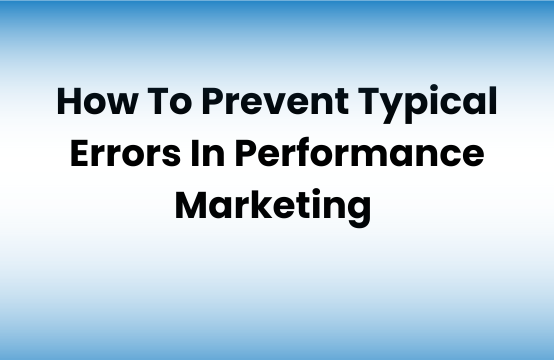Performance marketing relies on data-driven strategies to achieve measurable outcomes. To ensure your campaigns are effective, you need to track key metrics that provide insights into your marketing efforts. Here are the top performance marketing metrics you should be monitoring and how to improve them.
1. Click-Through Rate (CTR)
What it is: CTR measures the percentage of people who click on your ad after seeing it. By dividing the total number of clicks by the total number of impressions, it is computed.
Why it matters: A high CTR indicates that your ad is relevant and appealing to your audience.
How to improve it:
- Optimize Ad Copy: Use compelling headlines and persuasive language.
- Use High-Quality Images: Ensure your visuals are attractive and relevant.
- Test Different CTAs: Experiment with various calls-to-action to see which resonates best with your audience.
2. Conversion Rate (CVR)
What it is: CVR measures the percentage of users who complete a desired action (such as making a purchase or filling out a form) after clicking on your ad.
Why it matters: A high conversion rate shows that your landing page and overall offer are effective.
How to improve it:
- Simplify Your Landing Page: Make it easy for users to take the desired action.
- A/B Test Landing Pages: Test different versions of your landing pages to see which performs better.
- Optimize for Mobile: Ensure the landing pages are more mobile friendly.
3. Cost Per Acquisition (CPA)
What it is: CPA measures the cost of acquiring a new customer or lead. By dividing the entire cost of the campaign by the quantity of conversions, it is computed.
Why it matters: Lowering your CPA can increase your return on investment (ROI).
How to improve it:
- Target the Right Audience: Use data and analytics to refine your audience targeting.
- Optimize Ad Spend: Give top-performing advertisements a larger budget.
- Improve Ad Relevance: Ensure your ads align closely with user intent and search queries.
4. Return on Ad Spend (ROAS)
What it is: ROAS measures the revenue generated for every dollar spent on advertising. It is computed by dividing total revenue by total amount spent on advertisements.
Why it matters: ROAS indicates the overall effectiveness and profitability of your advertising campaigns.
How to improve it:
- Focus on High-Performing Channels: Invest more in channels that deliver the best ROAS.
- Enhance Product Pages: Improve the quality and detail of your product pages to boost sales.
- Use Retargeting: Implement retargeting strategies to re-engage users who have shown interest but didn’t convert.
5. Customer Lifetime Value (CLV)
What it is: CLV predicts the total revenue a business can expect from a single customer account throughout their relationship with the company.
Why it matters: Understanding CLV helps in making informed decisions about how much to invest in acquiring new customers.
How to improve it:
- Improve Customer Retention: Implement loyalty programs and excellent customer service.
- Upsell and Cross-Sell: Encourage existing customers to purchase more or related products.
- Personalize Marketing Efforts: Use customer data to personalize your marketing messages and offers.
6. Bounce Rate
What it is: Bounce rate measures the percentage of visitors who leave your website after viewing only one page.
Why it matters: A high bounce rate may indicate that your landing page is not engaging or relevant.
How to improve it:
- Improve Page Load Speed: Ensure your website loads quickly to prevent users from leaving.
- Enhance Content Quality: Provide valuable and relevant content that meets users’ expectations.
- Optimize User Experience: Make sure your website is easy to navigate and visually appealing.
Tracking these performance marketing metrics is crucial for understanding and improving your campaigns’ effectiveness. By regularly monitoring and optimizing these metrics, you can enhance your marketing strategies, drive better results, and achieve your business goals. Keep experimenting, analyzing, and refining your approach to stay ahead in the competitive landscape of digital marketing.
Do check out my last blog on How to become a performance marketer in 2024








